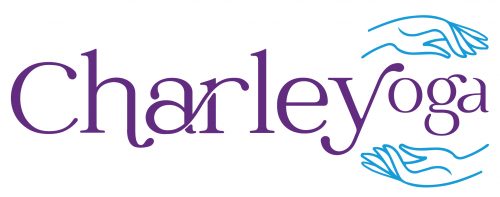The relationship between the spine and the breath can be used really effectively to help release tension in the spine. It’s especially helpful for those that have ongoing pain or back problems and may be a little tentative about moving in large increments. It’s a great way of subtly and safely moving the entire spinal column and can easily be done lying down if sitting is not an option. The added bonus is the ability of the breath to take you into a state of relaxation, the perfect environment for spinal tension to relax and ease.
Inefficient breathing is both a cause and a result of tension in the spine and surrounding muscles. So, pranayama (breathing practice) can be helpful in both releasing and preventing spinal tension.

Back and side view of spine
The spine is comprised of 33 vertebrae in 5 sections asfollows – 7 cervical vertebrae (neck), 12 thoracic vertebrae (where ribs attach), 5 lumbar vertebrae in the lower back, 5 fused sacral vertebrae (the sacrum) and 4 coccygeal vertebrae (sometimes 5) also fused in adults.
The basics of spine function, is that we should be able to do the following with every joint of spine:
- Flexion & extension/ bends – forward & back
- Lateral flexion/ bends – side to side
- Rotate – both ways – ie twisting!
 When we breath, the ribs move through 3 dimensions, out and in, forward and back and up and down by rotating in their joints at the thoracic spine. You can see by the diagrams how the ribs move on inhalation and exhalation. Many people have rigid ribs due to misalignment, injuries or stress which interferes with breathing.
When we breath, the ribs move through 3 dimensions, out and in, forward and back and up and down by rotating in their joints at the thoracic spine. You can see by the diagrams how the ribs move on inhalation and exhalation. Many people have rigid ribs due to misalignment, injuries or stress which interferes with breathing.
 Awareness of the sternum can play a part in breathing practice, the sternum has 3 parts like an upside down broad sword. The manubrium (handle) at the top, the body in the middle and xyphoid at the bottom tip. It can be helpful to visualise expanding the chest at the manubrium rather than from the xyphoid to avoid over arching the lower back and sinking through the upper ribcage.
Awareness of the sternum can play a part in breathing practice, the sternum has 3 parts like an upside down broad sword. The manubrium (handle) at the top, the body in the middle and xyphoid at the bottom tip. It can be helpful to visualise expanding the chest at the manubrium rather than from the xyphoid to avoid over arching the lower back and sinking through the upper ribcage.
 The sacrum, although firmly ligatured to the back of the pelvis, has some play called nodding or nutation. On the inhale, the sacrum moves backwards slightly and on the exhale it moves forwards. This nodding pumps the cerebrospinal fluid around the spinal canal and brain (central nervous system).
The sacrum, although firmly ligatured to the back of the pelvis, has some play called nodding or nutation. On the inhale, the sacrum moves backwards slightly and on the exhale it moves forwards. This nodding pumps the cerebrospinal fluid around the spinal canal and brain (central nervous system).
If you come to class this week, we are working on the breath and spinal tension. If you haven’t been to class before and are interested in yoga for back pain, you can book in a trial class on the bookings page here or contact us for a chat about some private yoga classes.
References : The Yoga of Breath, Richard Rosen

